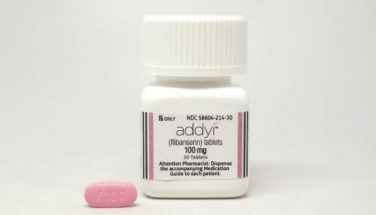AT THE ANNUAL MEETING ON WOMEN’S CANCER
SAN DIEGO (FRONTLINE MEDICAL NEWS) – Primary tumor metabolic parameters were not significant prognostic factors for tumor recurrence in patients with regional lymph node–involved, locally advanced cervical cancer, but nodal maximum standardized uptake value from advanced pretreatment imaging was, according to results from a South Korean study.
At the annual meeting of the Society of Gynecologic Oncology, Dr. Gun Oh Chong said that negative prognostic factors of locally advanced cervical cancer treated with computer-controlled radiation therapy (CCRT) include advanced FIGO stage, large tumor size, and the presence of lymph node metastasis. Pretreatment 18fluorodeoxyglucose positron emission tomography/computed tomography (FDG-PET/CT) is widely used to detect lymph node involvement, distant metastasis, and recurrent disease, “but the degree of F-18 FDG uptake in regional lymph nodes has not been fully investigated,” said Dr. Chong of the gynecologic cancer center at Kyungpook National University Medical Center, Daegu, South Korea. “There is no comparison study on the prognostic value of F-18 FDG uptake in primary tumor and regional lymph node in patients who had regional lymph node involvement.”
In an effort to compare the prognostic value of primary tumor and regional lymph node metabolic parameters for predicting tumor recurrence and to identify the most powerful biological marker predictive of tumor recurrence measured by pretreatment FDG-PET/CT, the researchers evaluated 56 patients with cervical cancer who had pelvic and/or para-aortic lymph node metastasis.
Metabolic parameters studied included the maximum standardized uptake value (SUVmax), the metabolic tumor volume (MTV), and total lesion glycolysis (TLG) of the primary tumors and lymph nodes, which were measured with pretreatment FDG-PET/CT. They used the clinical metabolic parameters to perform univariate and multivariate analyses for disease-free survival.
The mean age of patients was 52 years and the majority (79%) had stage IIB disease. Dr. Chong reported that no differences in disease-free survival were observed according to the metabolic parameters in the primary tumors. However, disease-free survival was significantly longer in patients with low values of nodal metabolic parameters than in those with high values of nodal metabolic parameters.
On univariate analysis, the nodal metabolic parameters SUVmax, MTV, and TLG were significantly associated with disease-free survival, as were para-aortic lymph node metastasis, and posttreatment response. On multivariate analysis only two variables were significant determinants of disease-free survival: nodal SUVmax (4.7 or higher vs. 4.7 or lower; hazard ratio, 4.15; P = .041) and posttreatment response (partial response or progressive disease vs. complete response; HR, 7.16; P = .007). Only nodal SUVmax was an independent pretreatment prognostic factor for DFS, and the optimal cutoff for nodal SUVmax to predict progression was 4.7.
Dr. Chong reported having no financial disclosures.






